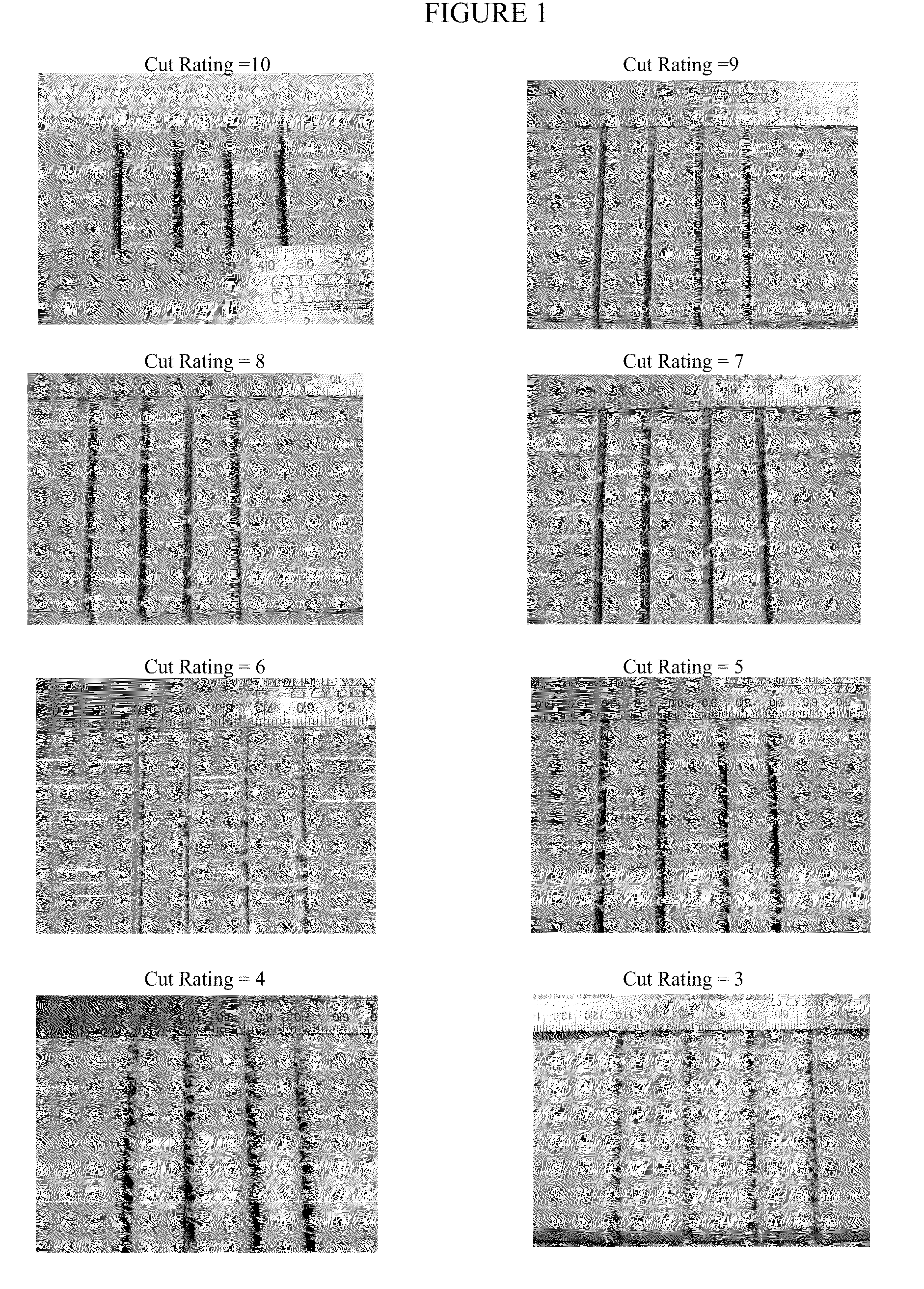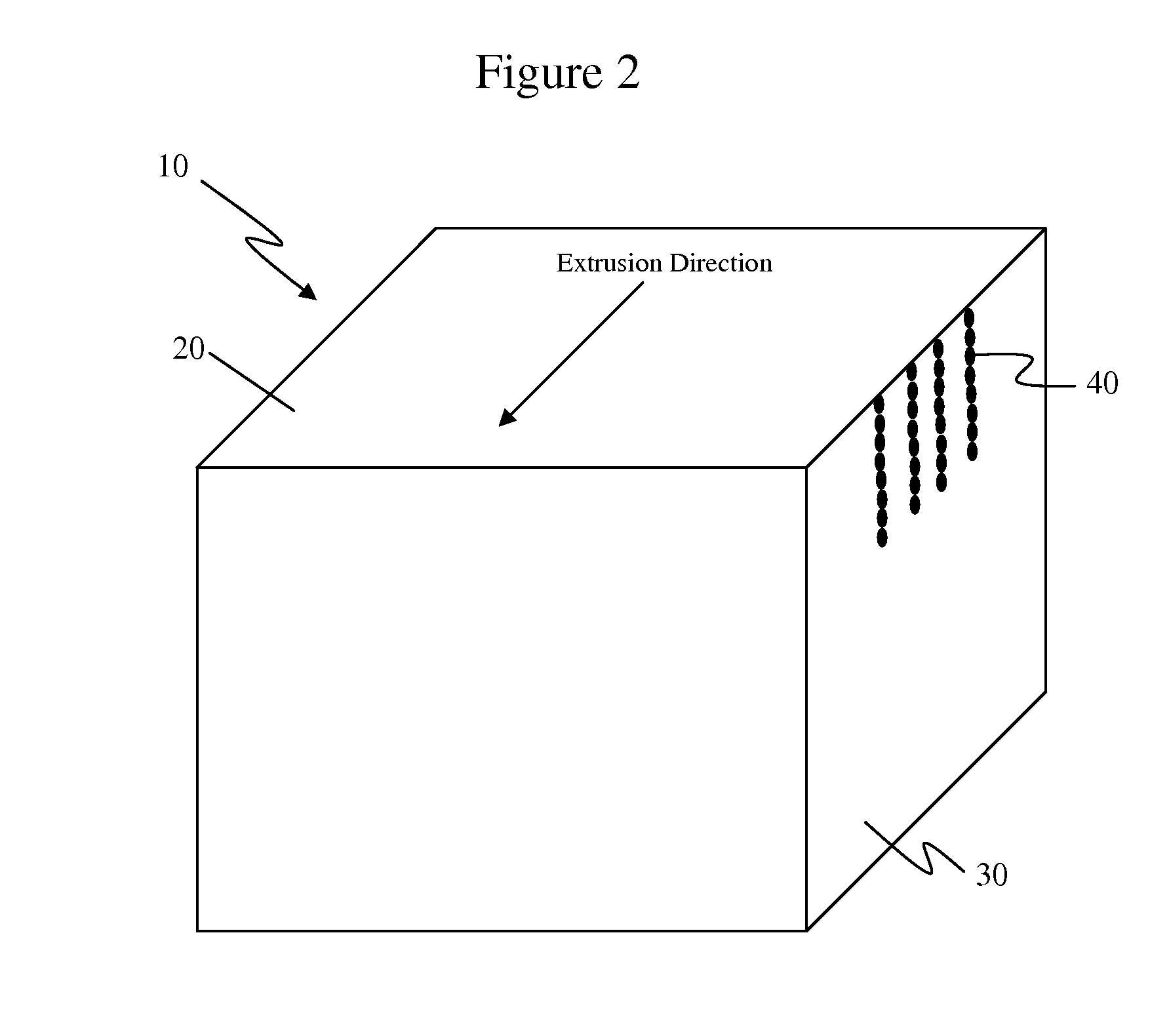Oriented polymer composition with a deoriented surface layer
a polymer composition and surface layer technology, applied in the field of oriented polymer compositions, can solve the problems of large variability in cutability and poor cutability, and achieve the effects of high structural integrity, high flexural modulus of an opc, and greater extent of orientation
- Summary
- Abstract
- Description
- Claims
- Application Information
AI Technical Summary
Benefits of technology
Problems solved by technology
Method used
Image
Examples
comp exs d
and E and Examples 1-4
Heat Treated OPC
[0127]Expose all longitudinal surfaces of an OPC equivalent to Comp Ex B to a column of hot air (950° C.±50° C.) at a sufficient velocity to displace the boundary layer air around the OPC to heat the longitudinal surfaces of the OPC. The column of heated air is sufficient to extend the width and thickness of the OPC and covers approximately 15 centimeters (6 inches) along the length of the OPC at any one time. Direct the OPC lengthwise through this column of heated air at different rates (see Table 3 for appropriate rates).
[0128]Characterize the resulting heat-treated OPCs using the Cutability Test Method and Orientation Ratio Measurement Method. Cutability rating values and de-oriented longitudinal surface layers are in Table 3. FIGS. 6-11 are plots of OR values as a function of depth into the heat treated OPCs from a longitudinal surface for Comp Ex D, Comp Ex E, and Example 1-4, respectively.
TABLE 3HeatTreatmentDe-OrientedFeed RateSurfaceCavi...
PUM
| Property | Measurement | Unit |
|---|---|---|
| Temperature | aaaaa | aaaaa |
| Length | aaaaa | aaaaa |
| Length | aaaaa | aaaaa |
Abstract
Description
Claims
Application Information
 Login to View More
Login to View More - R&D
- Intellectual Property
- Life Sciences
- Materials
- Tech Scout
- Unparalleled Data Quality
- Higher Quality Content
- 60% Fewer Hallucinations
Browse by: Latest US Patents, China's latest patents, Technical Efficacy Thesaurus, Application Domain, Technology Topic, Popular Technical Reports.
© 2025 PatSnap. All rights reserved.Legal|Privacy policy|Modern Slavery Act Transparency Statement|Sitemap|About US| Contact US: help@patsnap.com



